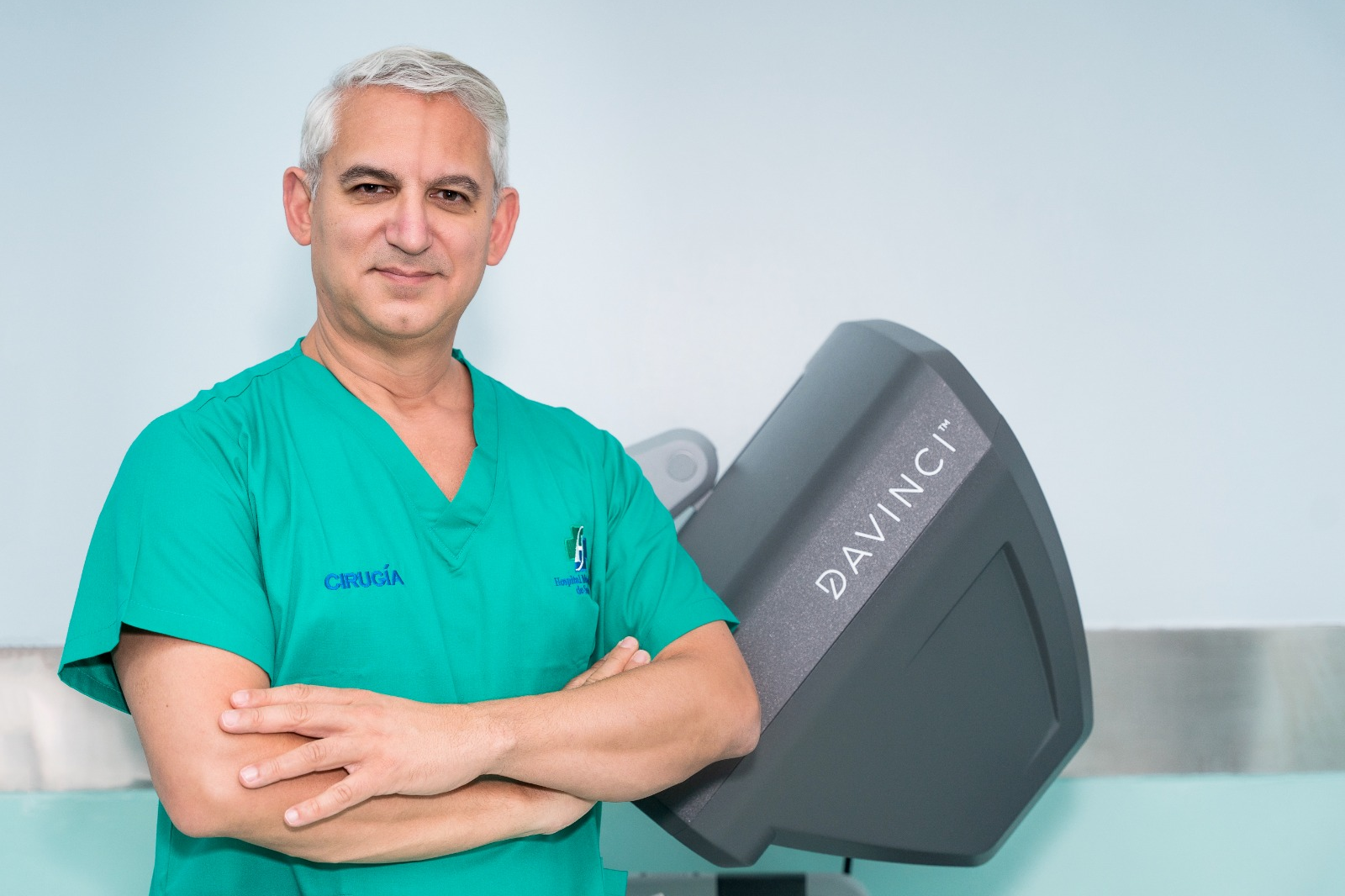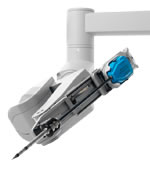Robotic surgery

SMART Surgery is an innovative, robotic-assisted laparoscopic prostatectomy (RALP) technique, developed by Dr. Samadi, that reduces surgical time to less than two hours and hospital recovery stay to less than 24 hours.


Dr. Samadi performs robotic prostate cancer surgery using the da Vinci robotic system. This minimally invasive procedure employs the latest advancements in robotics and computer technology to remove the cancerous prostate.

The Surgeon Console houses the master controls used by Dr. Samadi to manipulate the Patient-side Cart and the EndoWrist instruments. Dr. Samadi’s expert hands, translated into the EndoWrists, control every movement of the robot. He remains the surgeon for the entire procedure and is in control of the robot at all times.
During the procedure Dr. Samadi has a 3D view of the surgical field through the Insite Vision System. This is a vast improvement over traditional surgery and the 2D view of laparoscopic surgery. High definition video cameras give a 10X to 15X magnification for greater depth perception and a clearer visual field. Enhanced visualization of the prostate capsule is particularly important in aiding Dr. Samadi while he spares the neurovascular bundles responsible for erectile function and reconnects the urethra to the bladder.
Robotic prostate cancer surgery using the da Vinci system offers several advantages over the traditional laparoscopic surgical method of treating prostate cancer when objectively compared in the following areas:

Clinically Superior Results
The da Vinci robotic prostate cancer surgery system is able to provide superior clinical prostate cancer treatment results when compared to non-robotic traditional and scope-assisted procedures. This is because the da Vinci system's Surgeon Console is equipped to provide the surgeon with a revolutionary, three-dimensional, multi-level magnification spectrum.
More traditional scope-assisted surgery typically provides a much lower resolution image, and a far more limited field of vision. Furthermore, the da Vinci system’s sensitive electronics and one centimeter diameter surgical arms allow the surgeon to make highly precise movements inside the incision during robotic prostate cancer surgery. This means that the malignant tissue can be removed with an efficiency and ease unheard of prior to the era of robotic surgery.
This greater precision reduces the likelihood of relapse due to missed cancerous tissue. The precision of the da Vinci system also allows the surgeon to avoid damaging healthy prostate tissue, which improves clinical results, reduces scar tissue build up, and contributes to an overall shorter recovery period after robotic prostate surgery.

Reduced Risk of Complications
Surgery is an inherently risky medical procedure. However, for prostate cancer treatment, surgery can be the most effective choice for eradicating malignant tumors without the painful side effects of chemotherapy and radiation therapy. Among the more serious risks associated with surgical treatment is the possibility of infection at the incision site.
Such infections are often the primary cause of serious complications which may hamper a quick and uneventful recovery. The da Vinci system greatly mitigates the risk of infection during robotic prostate surgery. First, the size of the incision(s) is significantly smaller with robotic prostate surgery than with the traditional procedure. A standard, non-robotic prostate surgery requires a six- to eight-inch vertical incision to the abdomen.
A large, open incision increases the patient's susceptibility to bacterial infection during and after the surgery. Post-operative infections are more common than intra-operative infections, as hospital rooms are not maintained at the same level of sterility which operating rooms are. The da Vinci robotic prostate surgery system utilizes a much less invasive technique requiring four to five small incisions, each less than two inches. These smaller incisions will heal significantly faster than the large incision needed in traditional surgery.

Minimal Scarring
The sheer size of the incision needed for a traditional prostatectomy produces significant scarring in the patient’s lower abdomen. The robotic prostate surgery procedure leaves incisions which heal with little or no visible scarring. In addition to the obvious aesthetic value, minimizing scar tissue on the interior walls of the incision promotes better healing.
Excess scar tissue build-up can sometimes interfere with the proper function of the prostate. Although such a complication is rare, it's worth considering when exploring prostate cancer treatment options. The precision of robotic prostate surgery offers an inherent solution to this potential difficulty. By minimizing the size of the incision needed to remove cancerous tissue, the risk of scar tissue-related complications is greatly mitigated.

Quicker Recovery Period
When a physician determines robotic prostate surgery is the best prostate cancer treatment option, da Vinci’s robotic technology optimizes the chances of a quicker recovery time as opposed to traditional surgical prostatectomy. The smaller incisions required to maneuver the operating arms heal much faster, require fewer sutures and, therefore, are less vulnerable to tearing or infection.
The precise movements of the robotic arms allow a more targeted approach for cleaner removal of malignant tissue and reduces damage to healthy tissue during robotic prostate surgery. The operating arms of the da Vinci Surgical System are designed to avoid contact between the operating instruments and the walls of the incision. All of these advantages translate to a speedier and less worrisome recovery period.

Surgeon Console For Robotic Prostate Surgery
The surgeon operates while seated comfortably at the da Vinci Surgeon Console, an ergonomically designed console viewing a 3-D image of the operative site. As the surgeon moves his hands, wrists and fingers, the instruments are performing the same movements inside the patient's body. The da Vinci Robotic System is able to scale the doctor's motions and translate them to the operating arms during robotic prostate surgery.

Patient-side Cart
This part of the robot provides the instrument arms that are completely under the control of the surgeon. The laparoscopic arms pivot at the 1-cm operating ports eliminating the use of the patient’s body wall for leverage and minimizing tissue damage. Supporting surgical team members assist in installing the proper instruments, preparing the 1-cm port in the patient, as well as supervise the laparoscopic arms and tools being utilized whenever a robotic prostate surgery is underway.

InSite Vision System with high resolution 3-D Endoscope
This component provides true 3-D images of the operative field during robotic prostate surgery. Operative images are enhanced, refined and optimized using image synchronizers, high intensity illuminators and camera control units during the course of the robotic assisted surgery.
